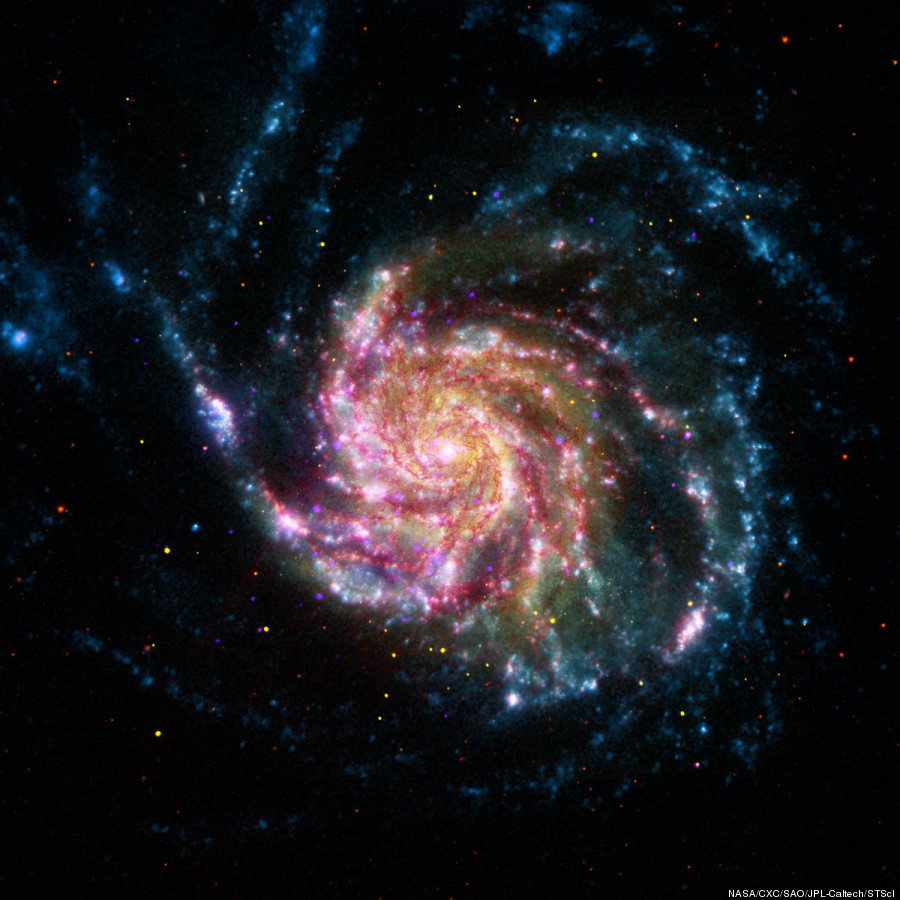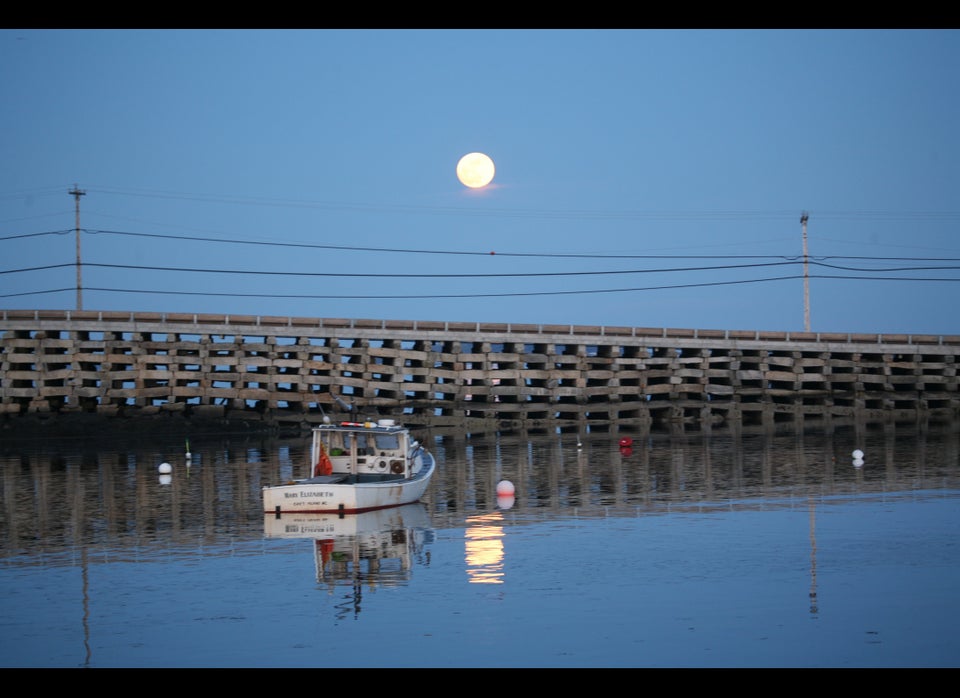
How many telescopes does it take to photograph one galaxy? Four, it seems.
This image of the Pinwheel Galaxy, also known as Messier 101 or NGC 5457, is a combination of infrared, visible, ultraviolet and X-ray data collected by four different NASA telescopes: Chandra, Spitzer, Hubble and GALEX.
Each telescope's unique imaging technology provides a different layer to the overall image. Chandra, which visualizes X-rays, adds purple to the image. Spitzer captures infrared light that appears red in the image. The Galaxy Evolution Explorer (GALEX) interprets ultraviolet light and is responsible for the blue coloring, and Hubble the yellow, as it reports traces of visible light.
While NASA didn't release this image until late May, the pieces have been coming together for years. In 2006, the galaxy was imaged by Hubble and released as the largest and most detailed picture of a galaxy to that point.
This picture might be new, but in reality it's already millions of years behind.
From the Chandra website:
The Pinwheel Galaxy is in the constellation of Ursa Major (also known as the Big Dipper). It is about 70% larger than our own Milky Way Galaxy, with a diameter of about 170,000 light years, and sits at a distance of 21 million light years from Earth. This means that the light we're seeing in this image left the Pinwheel Galaxy about 21 million years ago - many millions of years before humans ever walked the Earth.
Check out the composite in full, below:

